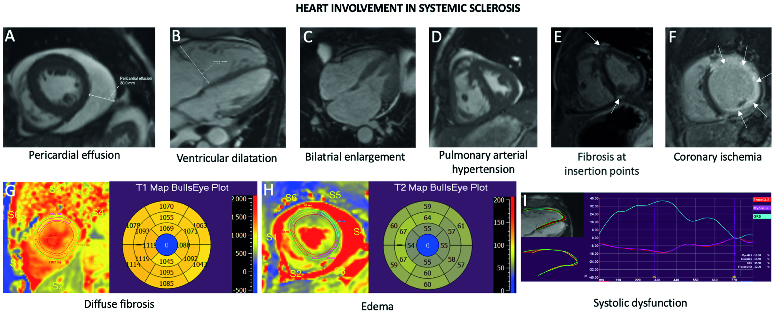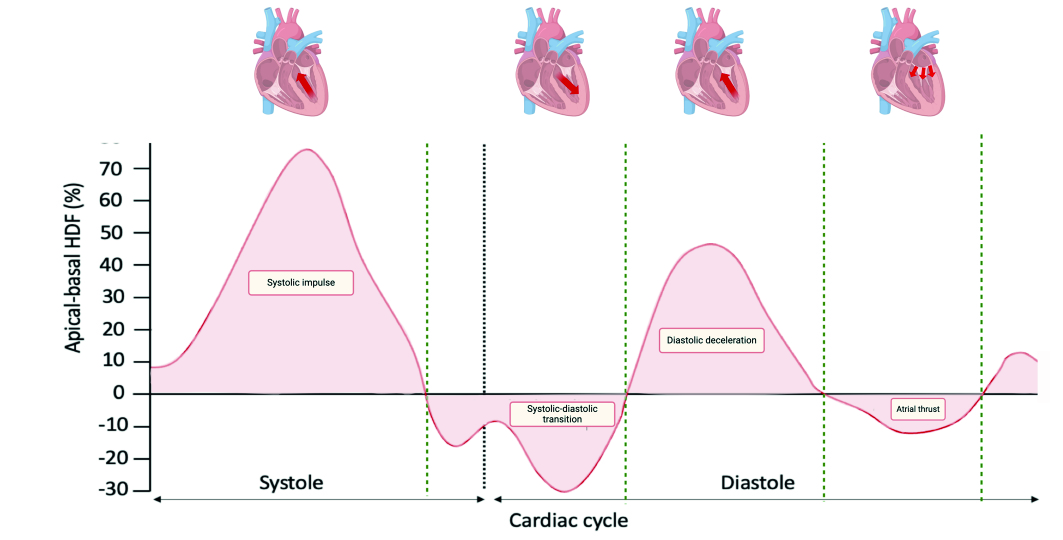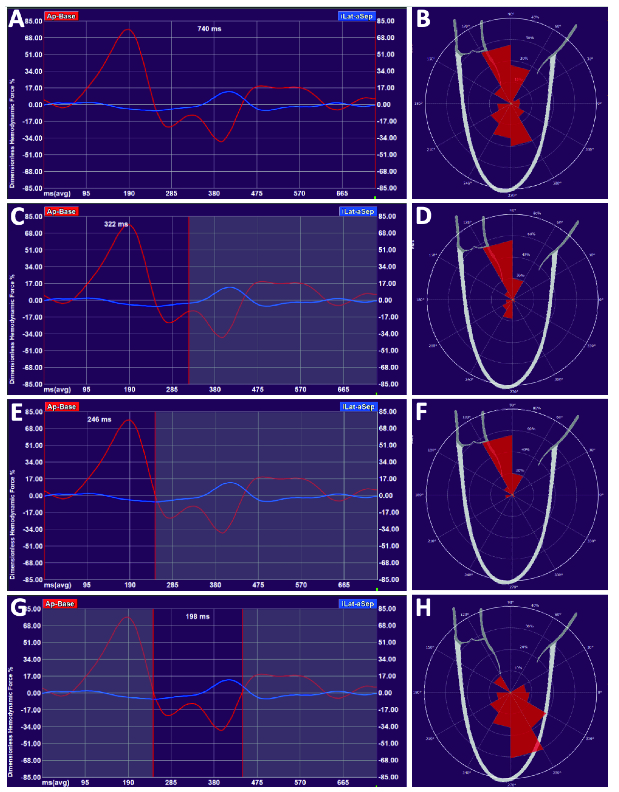Session Information
Session Type: Poster Session C
Session Time: 10:30AM-12:30PM
Background/Purpose: Systemic sclerosis (SSc) is a connective tissue disease marked by inflammation, microvascular changes and fibrosis. Cardiac comorbidities are the leading cause of mortality. Early diagnosis of cardiovascular dysfunction remains difficult prior to clinical manifestations. Cardiac MRI (CMR) has emerged as a great noninvasive tool to assess cardiological impact in SSc. Hemodynamic forces (HDF) are a measurement of the global force exchanged between blood volume and myocardium assessed using CMR, based on the Navier-Stokes equation. In this study, we aim to assess diagnostic value of HDF measurement in SSc compared to healthy controls (HC), as a potential early indicator of subclinical cardiac dysfunction.
Methods: In a single-center study, patients with SSc who met the American college of rheumatology and European League against Rheumatism classification criteria were included and a 1.5T CMR exam was performed. HDF were obtained using an advanced post-processing software (Medis Suite, Leiden, Netherlands). Movements from deformation imaging of 2, 3, and 4-chamber cine were used for longitudinal (apical-basal – Figure 1) and transversal (septal‐lateral) left ventricle (LV) HDF calculation. To compare different LV sizes, HDF were normalized, thus reported as percentage of gravity acceleration.
Results: Of the 11 SSc patients (age 46.27±15.2 years, 19% male) recruited, 5 (46%) patients had a diffuse form and 5 (46%) patients had pulmonary hypertension. Two (18%) patients LV systolic dysfunction with a mean LV ejection fraction (LVEF) of 59%. Five patients (46%) patients had right ventricle (RV) systolic dysfunction with a mean RVEF of 50%. We compared HDF in 11 SSc patients and in 11 age-matched healthy controls from an external cohort. SSc patients showed larger LV longitudinal HDF in systole (both RMS and peak, p=0.029, respectively p=0.047), changes which could be explained by anatomical deformation caused by increased pressure in the RV. Diastolic deceleration was significantly lower in SSc (p=0.040), a finding that might indicate reduced LV compliance in the context of elevated LV filling pressures. Furthermore, the transverse to longitudinal ratio and the angle – elevated as compensatory mechanisms – were strongly correlated with the Rodnan score, a well-known predictor for disease severity and prognosis.
Conclusion: HDF analysis has the potential to be a more sensitive marker of cardiac deterioration in SSc patients compared to traditional volumetric and functional parameters.
A – Circular pericardial effusion;
B – Severe right ventricular (RV) dilatation;
C – Dilatation of both atria;
D – Septal flattening (D-shaped left ventricle) as a sign of pulmonary arterial hypertension;
E – Late gadolinium enhancement (arrows) of right ventricular insertion point;
F – Myocardial infarction scar (arrows) in the anterior, lateral and inferior walls of left ventricle;
G – Diffuse myocardial fibrosis;
H – Myocardial edema;
I – Decreased global longitudinal strain in the RV myocardium.
B, D, F, H: The polar histogram, projected on the left ventricle, shows the magnitude and direction of HDF;
A, B – HDF throughout the complete cardiac cycle;
C, D – HDF throughout the systole;
E, F – HDF throughout the systolic propulsive phase;
G, H – HDF throughout the systolic-diastolic transition.
To cite this abstract in AMA style:
Kante A, Afana A, Sène D, Bousson V, Goncalves T, Ballout E, Toupin S, Dillinger J, Bigot W, Pagis V, Champion K, burlacu R, mouly s, Henry P, Pezel T, Comarmond C. Assessing Left Ventricular Hemodynamic Forces in Systemic Sclerosis Patients: Pilot Study [abstract]. Arthritis Rheumatol. 2024; 76 (suppl 9). https://acrabstracts.org/abstract/assessing-left-ventricular-hemodynamic-forces-in-systemic-sclerosis-patients-pilot-study/. Accessed .« Back to ACR Convergence 2024
ACR Meeting Abstracts - https://acrabstracts.org/abstract/assessing-left-ventricular-hemodynamic-forces-in-systemic-sclerosis-patients-pilot-study/



